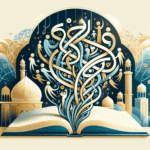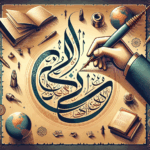The Arabic Alphabet and Its Relationship with Other Scripts
The Arabic alphabet is more than just a writing system; it’s a bridge that connects cultures and languages across the globe. In this blog post, we’ll explore the fascinating world of the Arabic script, its historical impact, and how it intertwines with other writing systems. So, grab a cup of coffee ☕, and let’s dive in!
Table of Contents
1. Introduction to the Arabic Alphabet
2. Historical Context of the Arabic Script
3. Influence on Other Writing Systems
4. Modern-Day Relevance
5. Conclusion
6. FAQ Section
Introduction to the Arabic Alphabet
The Arabic alphabet is a script used by over 420 million people worldwide, primarily in the Arab world. It’s composed of 28 letters, written from right to left, and is known for its cursive form that connects most letters. But did you know that its influence extends beyond the boundaries of the Middle East? 😊
Historical Context of the Arabic Script
The Arabic script originated in the 4th century AD, evolving from the Nabataean script. It was initially used for writing the Quran, which significantly boosted its spread. As Islam expanded, so did the use of Arabic, transforming it into a language of culture, science, and administration in many regions.
Influence on Other Writing Systems
🖋️ The Arabic script has played a crucial role in the development of several other writing systems. Let’s take a look at a few:
1. Persian Script
The Persian language, spoken in Iran, Afghanistan, and Tajikistan, adopted the Arabic script with a few additional letters to accommodate sounds unique to Persian. This adaptation is known as Perso-Arabic script.
2. Urdu Script
Urdu, a language spoken in Pakistan and parts of India, also uses a version of the Arabic script. This script, called Nastaliq, is artistically distinct and renowned for its aesthetic beauty.
3. Turkish Script (Historical)
Before the adoption of the Latin alphabet in 1928, the Turkish language used an Ottoman Turkish script, which was a variant of the Arabic script. Although no longer in use, this shows the historical reach of Arabic.
Modern-Day Relevance
Today, the Arabic script remains highly relevant, not only for its primary role in writing Arabic and its derivatives but also in digital typography and calligraphy arts. It continues to influence and inspire the design of modern fonts and graphic design, bridging the gap between tradition and contemporary aesthetics.
Conclusion
The Arabic alphabet is more than just a collection of letters; it’s a testament to cultural exchange and linguistic evolution. Its influence on other scripts highlights the interconnectedness of human civilization. Whether you’re learning Arabic or just exploring its history, the script offers a captivating journey through time.
FAQ Section
Q1: Is the Arabic alphabet the same as the Persian alphabet?
A: Not exactly. The Persian alphabet is based on the Arabic script but has additional letters to represent sounds specific to Persian.
Q2: Why is the Arabic script written from right to left?
A: The right-to-left orientation of the Arabic script is rooted in its historical development and the materials used for writing in ancient times, such as papyrus and parchment.
Q3: Can the Arabic script be used for other languages?
A: Yes! The Arabic script has been adapted for several languages, including Persian, Urdu, and historically, Turkish, to name a few.
Q4: How difficult is it to learn the Arabic script?
A: Learning the Arabic script requires practice, especially because of its cursive nature. However, with dedication, it’s certainly achievable!
Q5: What is the artistic form of the Arabic script known as?
A: The artistic form of Arabic script is often referred to as Arabic calligraphy, which is celebrated for its beauty and complexity.
I hope this exploration into the Arabic alphabet and its connections with other scripts has been enlightening! If you have any more questions, feel free to reach out. Happy learning! 🎉






